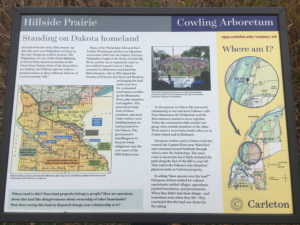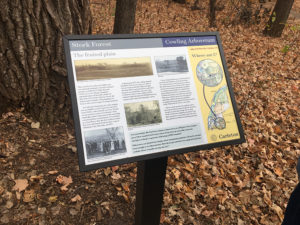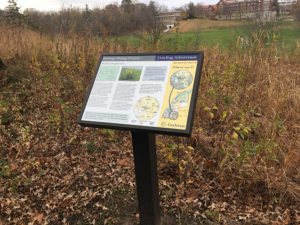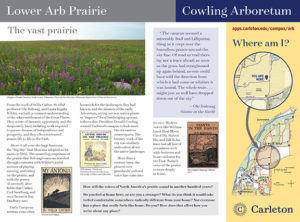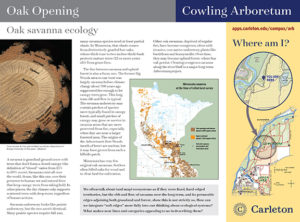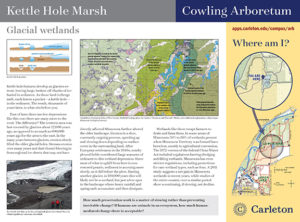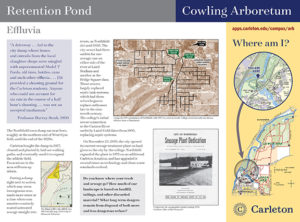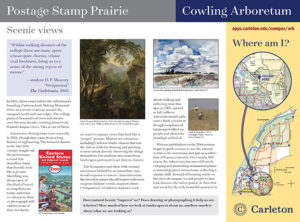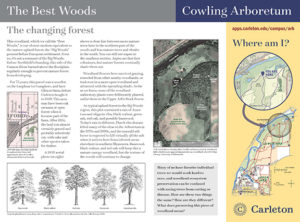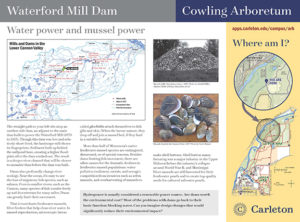As we were working on the new map of the Cowling Arboretum, Arb Director Nancy Braker and I also threw around the idea of putting interpretive (and directional) signs out in the space. It’s a special place to me (and to Nancy) and one of the important pieces to me is that it’s not blatantly pedagogical: there’s a lot of human and natural history there, but it’s also just a lovely space to experience. The prairie, for example, is one of my favorite spots on Earth.
So we ended up with a plan that gave some background, enrichment information to the landscape, and also trued to ask questions—the sort of open-ended questions I treasure from my time as a student there. To me, those questions are the center of each sign. The idea of centering questions is also informed by being a Quaker, where “advices and queries” are a basic tool to open up our understanding of how to be, well… good. Or try to be. This may seem like an odd element in the making of interpretive signs, but what we ended up with was one of the richest projects I’ve had the privilege to work on.
We ended up with 15 signposts with two signs each, intended to rotate every two years so as to give four-year students both sets. Topics ranged from literature of the prairie to the development of wastewater treatment, the staged nature of “scenery” to pine plantations, and include the stories of the Carleton Farm, the farms (and woodlots) that preceded the Arb, and the changing use of the Arb for college recreation and sports.
